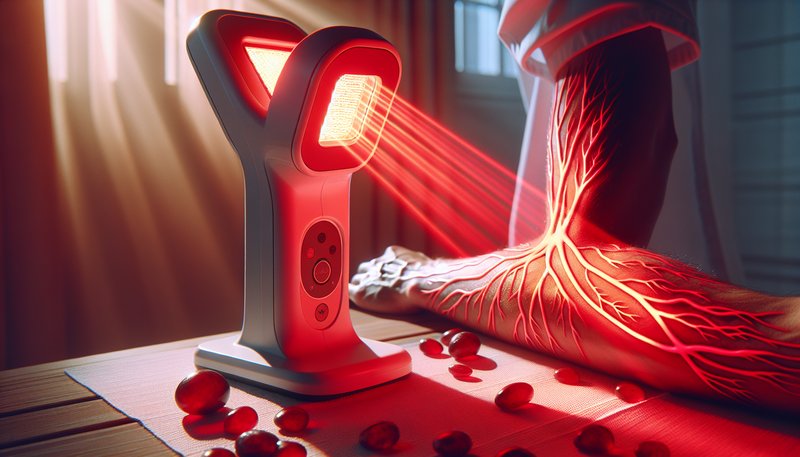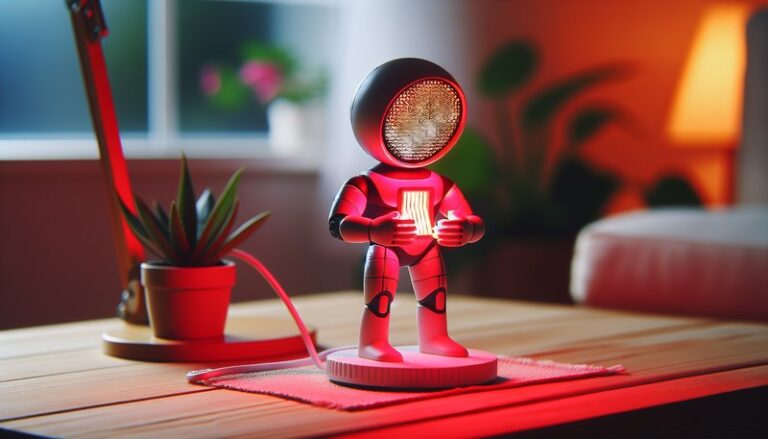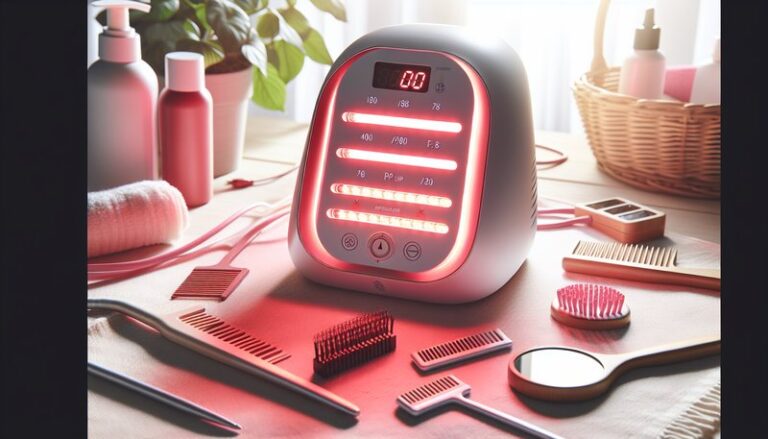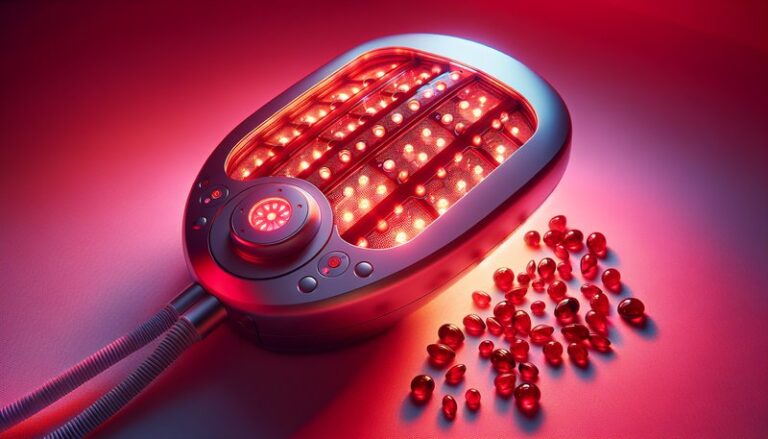Does Red Light Therapy Help Broken Capillaries?
Does Red Light Therapy Help Broken Capillaries?
Are you curious about innovative treatments for skin concerns like broken capillaries?
This article explores the effectiveness of red light therapy (RLT) in addressing broken capillaries, a common skin issue that can cause discomfort and self-consciousness. We will delve into the science behind red light therapy, its potential benefits, important considerations, and alternative treatments to provide a complete understanding of this therapeutic option.
Key Takeaways
- Red light therapy may stimulate skin healing, potentially improving the appearance of broken capillaries.
- Advantages of RLT include minimal side effects and a non-invasive nature.
- Exploring alternatives and consulting healthcare professionals is essential for optimal results.
What is Red Light Therapy?
Red light therapy is a non-invasive treatment method that utilizes low-level wavelengths of red and near-infrared light to penetrate the skin and promote healing at a cellular level. This therapy is gaining traction in various wellness and medical communities for its purported benefits, including reduced inflammation, enhanced circulation, and accelerated healing processes.
The application of RLT involves exposing targeted areas of the skin to specific wavelengths of light, typically between 600 to 1000 nanometers. This light stimulates mitochondrial activity, resulting in increased energy production (ATP) and cellular regeneration.
What are the Benefits of Red Light Therapy?
Red light therapy can offer various advantages, particularly for issues like broken capillaries. Let’s explore some key benefits.
Promotes Healing
Red light therapy enhances cellular repair mechanisms, which may help to mend damaged capillaries and improve overall skin health. A study published in the Journal of Photomedicine and Laser Surgery found that RLT improved wound healing, suggesting its potential for other skin issues.
Reduces Inflammation
RLT is known for its anti-inflammatory properties. By reducing inflammation around broken capillaries, RLT may minimize redness and swelling, leading to a more even skin tone.
Non-Invasive Solution
One of the most significant advantages of red light therapy is that it is non-invasive. Unlike surgical options for treating broken capillaries, RLT requires no needles or incisions, making it a preferable option for many individuals.
Enhanced Circulation
RLT can stimulate blood flow, which is essential for delivering nutrients and oxygen to the skin. Improved circulation can support the healing process of broken capillaries, promoting healthier skin overall.
Is it Possible to Treat Broken Capillaries with Red Light Therapy?
Yes, it is possible to treat broken capillaries with red light therapy. Many professionals recommend it as a complementary treatment alongside other therapies. However, results can vary based on individual skin types, the severity of the broken capillaries, and specific treatment protocols.
What are the Advantages of Treating Broken Capillaries with RLT?
Using red light therapy to treat broken capillaries offers several advantages:
Discover our insights Weight Loss with Red Light Therapy
Safety Profile
RLT is generally considered safe, with minimal side effects compared to more aggressive treatments. Patients often report experiencing no pain or discomfort during the therapy.
Convenient Treatment Options
Many clinics and spas offer red light therapy sessions, and some devices are available for home use, providing flexibility in how and when individuals choose to undergo treatment.
Supports Overall Skin Health
Not only can RLT help with broken capillaries, but it can also improve overall skin texture and tone, addressing multiple concerns simultaneously.
Cost-Effectiveness
RLT can be more affordable than surgical procedures designed to treat broken capillaries, making it accessible for a broader range of patients.
What are the Disadvantages of Treating Broken Capillaries with RLT?
While red light therapy has many benefits, there are also some drawbacks to consider.
Get informed with Does Red Light Therapy Help Nerve Damage?
Variable Results
Not every individual will experience the same level of improvement, and some may require multiple sessions for noticeable results, leading to increased costs.
Time Commitment
To achieve optimal results, patients may need to commit to a series of treatments over an extended period, which can be a drawback for those seeking quick solutions.
Limited Research Specific to Capillary Repair
Despite the promising evidence supporting RLT in general, specific research directly related to its effectiveness in treating broken capillaries is still limited, warranting careful consideration and consultation with professionals.
What are the Things to Consider Before Trying Red Light Therapy?
Before deciding to pursue red light therapy for broken capillaries, several important factors should be taken into account.
Consultation with a Healthcare Provider
Before beginning any new treatment, it is crucial to consult with a dermatologist or qualified healthcare professional to discuss your specific skin concerns and determine if RLT is suitable for you.
Understanding Skin Type and Conditions
Individuals with certain skin types or conditions may not be ideal candidates for RLT. Discussing your medical history can help ensure that you receive the best treatment recommendations.
Treatment Frequency and Continuity
Be prepared for the commitment of multiple treatments. Understanding the recommended schedule and duration can lead to better overall satisfaction with the therapy’s results.
What are the Alternatives to Red Light Therapy?
For those seeking options beyond red light therapy for addressing broken capillaries, several alternative treatments are worth considering.
Laser Treatments
Laser therapy, such as pulsed dye laser or IPL (Intense Pulsed Light), has been shown to be effective in treating broken capillaries by targeting and collapsing the damaged vessels.
Topical Treatments
Certain topical treatments, such as those containing vitamin K or Retinoids, can strengthen the skin and improve the appearance of capillary damage over time.
Sclerotherapy
This medical procedure involves injecting a solution directly into the broken capillaries to collapse them. It is often used for larger visible veins and might benefit those with more significant concerns.
Lifestyle Changes
Incorporating lifestyle changes—like using sun protection, avoiding extreme temperatures, and maintaining a balanced diet—can also prevent further development of broken capillaries and support overall skin health.
Conclusion: Is it Recommended to Try Red Light Therapy for Broken Capillaries?
Red light therapy can serve as a helpful option for managing broken capillaries, particularly when used alongside other treatments. Its benefits, including safety, non-invasive nature, and overall support of skin health, make it appealing for those seeking alternatives to more aggressive procedures. However, it’s essential to consult a qualified professional to assess your unique situation and determine whether RLT or another treatment approach is most suitable.
Frequently Asked Questions
Can anyone use red light therapy for broken capillaries?
Most people can use red light therapy, but it’s essential to consult with a healthcare provider to ensure it’s suitable for individual skin types and conditions.
How long does it take to see results from red light therapy?
Results can vary, but many individuals may begin to notice improvements within a few weeks after starting treatment, depending on the severity of their broken capillaries.
Are there any side effects associated with red light therapy?
Red light therapy is generally considered safe, with minimal side effects. Some users may experience temporary redness or irritation, but these typically resolve quickly.
How often should red light therapy sessions be scheduled?
Treatment frequency can depend on the individual’s skin condition and the recommendations of a healthcare provider. Sessions might range from a few times a week to once a month.
Is red light therapy effective for other skin issues?
Yes, red light therapy has been reported to help with various skin concerns, including acne, wrinkles, and overall skin rejuvenation.






